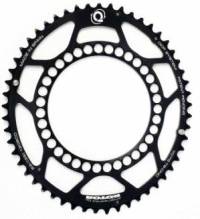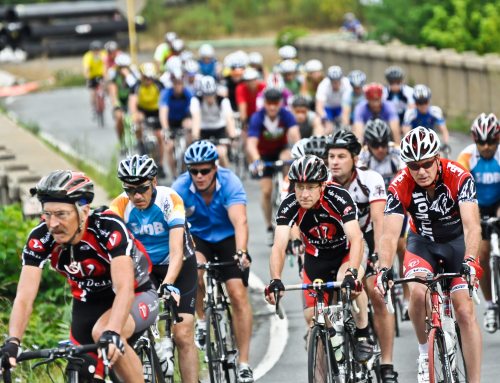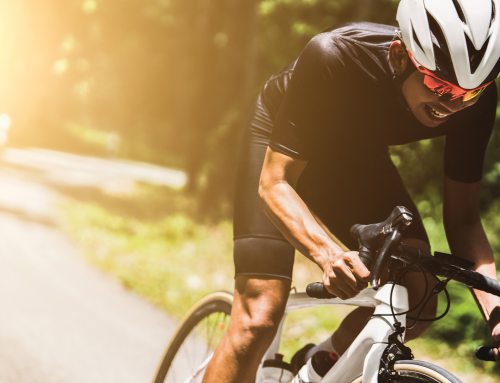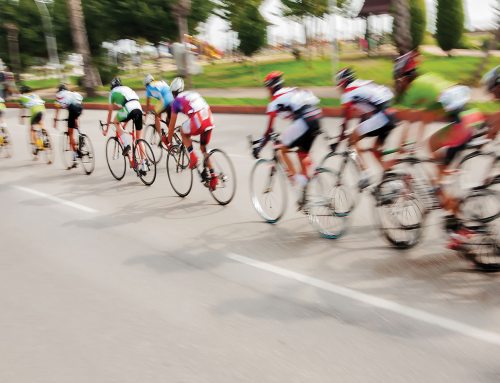 By Curtis Staples
By Curtis Staples
I had big plans for 2009 – big plans that included “a lot” of training to get faster. Not “a lot” as in years past when 30 hours on the bike was a standard week, and a mere 15 was recovery, but “a lot” compared to last year when I blew my back out. But unfortunately, my plan to increase training volume, did not work out quite like I planned either. So, I gave up on the idea of training more to get faster and decided to pursue the only option still available to me: buy speed. When all was said and done, I bought more training accessories and performance augmenters than a 25-handicap golfer with a case of the shanks. Here’s what I bought and how it made me faster:
Powercranks: $900
We’ll call this “Pedaling Gimmick Number 1”. Powercranks are designed so that each crank arm rotates independently of the other; meaning the user is forced to pull through the entire circular revolution of each pedal stroke. Riding on Powercranks can be described as: A) Really not fun and B) Hard work even when you’re in good shape.
However, in my case with only 4 hours of training a week on the Powercranks; I was able to manage a decent level of fitness. The Powercranks website lists all of the benefits of using them, such as improving running speed and increasing power transfer throughout the entirety of the pedal stroke (which is noticeable).
New Wheels: $1,000 (for each wheel)
After watching pros like Mark Hekman and Rashan Bahati ride 100mm deep carbon wheels at Criterium Nationals in 2008, I decided they were going to be the new hot thing for 2009, so I bought a 100mm carbon tubular rear wheel which I call “The Dinner Plate”. The wheel is extremely fast in a straight line; perfect for riding time trials (or triathlons) and flat criteriums. I would not, however, pair it with a 100mm deep front wheel for a regular bike race (A pair of 100mm’s, or a 100mm front with a rear disc is fine for a time trial or tri when you’re not around other riders, but cornering and holding position in a group with wheels that essentially turn your bike into a giant wind foil is a challenging proposition at best under the best conditions). I would not buy a front one unless paired with a 50 mm Zipp, which is a perfect wheel set most of the time. It also looks really cool. Zipp says that their 1080 wheel saves more than 12 seconds over their 808 (which Zipp claims save 2-7 watts at 30 mph) for a 40 kilometer time trial.
Saris Wireless Powertap: $999 (for their entry level wireless hub)
I had owned a Saris Powertap Pro (wired) for 5 years in until February, when it once and for all, died on me. After 5 years, I was shocked to find that I can no longer, in fact, train without seeing my power. So I bought a wireless Saris Powertap. It does not work any better then the old one (well before it stopped working) but it is wireless and it works (I think it reads lower then the old one; but maybe that is the lack of training).
Ceramic bearings: $200
This was the big stretch for me. I really did not believe that a ceramic bearing would make a huge difference. But I decided that a ceramic bottom bracket would be my starting point. Huge difference! I honestly believe that the difference from regular bearings to ceramic ones is more significant then I originally believed. Most ceramic bearing makers claim that ceramic bearings save 5-10 watts, when they are installed in either a wheel set or bottom bracket. I am not sure what the actual wattage savings are, however I do feel that the crank spins more freely and with less resistance.
Rotor Rings Q-Rings: $270
Let’s call this “Pedaling Gimmick Number Two”. I bought my Rotor Rings on a whim from a friend who manages a bike shop in Washington, D.C. I figured that if the Cervelo Test Team (Haussler) could go fast on them, they couldn’t be that bad, right? The Q-Rings work by increasing the speed one pedals through the dead spot of the pedal stroke and allowing for more power to be produced in the portions where you are pedaling. This is done by making an elliptical chainring that has both a section with that is effectively 50 teeth on the chainring (deadspot) and 56 teeth on the chainring (power zone) Since I bought them I’ve trained even less than I normally would, but after the initial break in period, I really love the Rotor Rings. I tried switching back to standard rings last month, but now they feel awkward and slow (an opinion I’ve heard echoed by several other Rotor Ring aficionados). Rotor claims a 5% increase in a 5-minute power test, for me the most noticeable change they have made is speeding up my cadence.
With all the nifty items that I have gotten this year, two of them really stand out for me: First, is my Powertap, which I could not function without. Honestly, I believe that training with one is the only way to really know that you are increasing your fitness. Second, (which I would purchase again) would be the Powercranks. Training on Powercranks for the short amount of time that I used them for this year, I believe is the only reason that I have any sort of fitness.
While my Powertap and Powercranks did not make up for all the mistakes in my training this year, I believe I have at least managed some decent fitness without really trying. I really enjoyed racing and training with all the other items I bought this year.
# # #
Curtis Staples is the store manager at Inside-Out Sports in Cary. Although he works in a triathlon shop; he does not run or swim. He does, however, race a bicycle a few times a year as a Category 2 rider.






